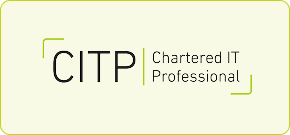Julian Fletcher FBCS, Chair of the BCS Quantum Specialist Group, explores and explains how to start a career in business architecture.
Business architecture is becoming an in-demand skill that bridges strategy and technology., yet many IT professionals still ask the same two questions: what is business architecture, and how do I start?
To find answers, we spoke with Julian Fletcher, author of Doing Business Architecture: The Rough Guide, a new book designed for professionals who want to move beyond IT delivery and into shaping business strategy. Julian shares his journey from technical roles into business architecture, explains why it’s often misunderstood, and offers practical steps for anyone looking to break into the field.
In this interview, you’ll learn how business architecture differs from business analysis and enterprise architecture and how to start building credibility with executives. If you’re an IT professional considering a career move, this conversation offers a clear roadmap for making business architecture your next step.
For IT professionals who have heard the term but are unsure, what is business architecture in simple, practical terms?
Business architecture is the golden thread that converts board-level strategic objectives, often quite abstract and generic in nature, into tangible deliverables (and, importantly, measurable) targets. I’m not only talking about digital delivery here but all other aspects of a business' operating model as well, so it could be HR, procurement, sales, marketing and the like. In other words, it's not just about IT per se.
The discipline of business architecture examines the business organisation as a whole, in contrast to its sister discipline of business analysis, which typically adopts a more project- or programme-specific approach, and enterprise architecture, which overlaps with business architecture but is more focused on digital and IT delivery.
If someone asks ‘how to start in business architecture’ as a career path, what first steps would you recommend?
My recommendation is to spend some time broadening your knowledge of how the given business you work in operates. Roles in business analysis, as well as related areas like user research and service design, can all provide such exposure.
I would also say that, based on experience, those whose heart and interests are primarily motivated by digital technology rather than wider business might be happier aiming for the more technology-focused role of an enterprise architect and ultimately a CIO. Still, there is a ‘glass ceiling’ in terms of progress in that path, which I refer to in the book.
Your book highlights artefacts like capability maps, value streams and heat maps. Which of these should a beginner focus on first?
I would say start with the top-level capability map for your organisation. If you're lucky, it may already have one, or if not, you will be doing your employer an enormous service by creating one. This essentially splits the organisation into three capability areas: the strategic (or board), the core business, and the enabling capabilities (those 'doing' activities done by HR, Training and IT to support the company).
Capabilities themselves describe what activities an organisation does, not how they go about doing them, and tend to be unchanging. Take the example of a retail bank, it will always have a core business activity of managing deposit accounts, even though the policy, customer engagement and application of technology to execute this activity may evolve dramatically over time.
Value streams are essentially the set of incremental steps by which an organisation delivers aspects of value (or a value proposition) for a given external stakeholder, like an external customer. Each value stream step in turn provides an additional value item, which helps to deliver the value proposition as a whole.
For you
Be part of something bigger, join BCS, The Chartered Institute for IT.
Adding the corresponding capabilities needed to produce each value item helps identify any redundancy and duplication of capabilities. Also, it may suggest areas for sharing them further to realise cost savings and performance efficiencies. To an extent, the sequential, staged nature of a value stream shares some similarities with both business analysis swimlane modelling and customer journey maps, but serves a distinct purpose in its own right.
The Business Architecture Quick Guide, published by the Business Architecture Guild, is a great way to find out more about business capability models, value streams and the arguably less widely known core business architecture disciplines of information modelling and organisation modelling. The fab four of business architecture, so to speak.
What challenges did you face introducing business architecture in an organisation that had never used it, and how did you overcome resistance?
Good question. To begin with, I was working for a large private sector commercial building and fit out company, so the very word architect had quite different connotations in that context, as you might imagine.
Simply getting 'face time' with the various subject matter experts who can help you build even the top-level capability map can require a good deal of careful socialisation, and risks easily being gummed up in the red tape of any large organisation — no less prevalent in the private sector than in the public sector. Not to mention, feathers can be inadvertently ruffled in those who have got used to working in a silo.
I certainly made mistakes in how I approached things in that organisation, which is sadly no longer with us. Still, I like to think I learned a lot about applying business architecture, practical situations. Securing a high-level (ideally board) mandate is highly advantageous. This support not only increases 'buy-in' from all stakeholders but also gives you confidence in the work you are doing and the value it will bring.
For someone transitioning from IT to business architecture, how can they avoid being perceived as ‘just another technologist’?
I refer to my earlier answer about getting to know other aspects of your employer's business outside the IT department's remit. It's never been easier to acquire a background in areas like financial and management accounting, sales and marketing, and contract law through YouTube and similar platforms. I also try to conceptualise the concept of upskilling and widening one's net in the book.
I would also strongly recommend studying for the Business Architecture Guild's Certified Business Architect (CBA) qualification. From my own perspective, the online Business Architect Pathway Program run by Agora Insights comes highly recommended.
How can business architecture techniques help IT professionals communicate more effectively with executives and the C-suite?
These techniques are written in the language of business rather than IT by design, and if we're being honest, many — if not most — of the C-suite (or leading board level executives) have a limited interest in technology for its own sake. And, in my opinion, rightly so.
Finally, for an IT professional who wants to start tomorrow, what three concrete actions would you suggest?
- Go on YouTube and search for a couple of good videos on business architecture and business capability modelling
- Read the Business Architecture Quick Guide, then follow up with more detailed reading to see if it's really for you
- Ask to see your organisation's top-level business capability map, and if a blank expression meets that request — there's your chance to establish one for them.
You can buy Julian’s book on Amazon.
Take it further
Interested in this and related topics? Explore BCS' books and courses.
- Business Architecture: A comprehensive guide
- Professional Certificate in Business Architecture
- The Survivor's Guide to Enterprise Architecture: Practitioner tales and pragmatic insights
- Mastering Digital Business: How powerful combinations of disruptive technologies are enabling the next wave of digital transformation
- Solution Architecture Foundations












